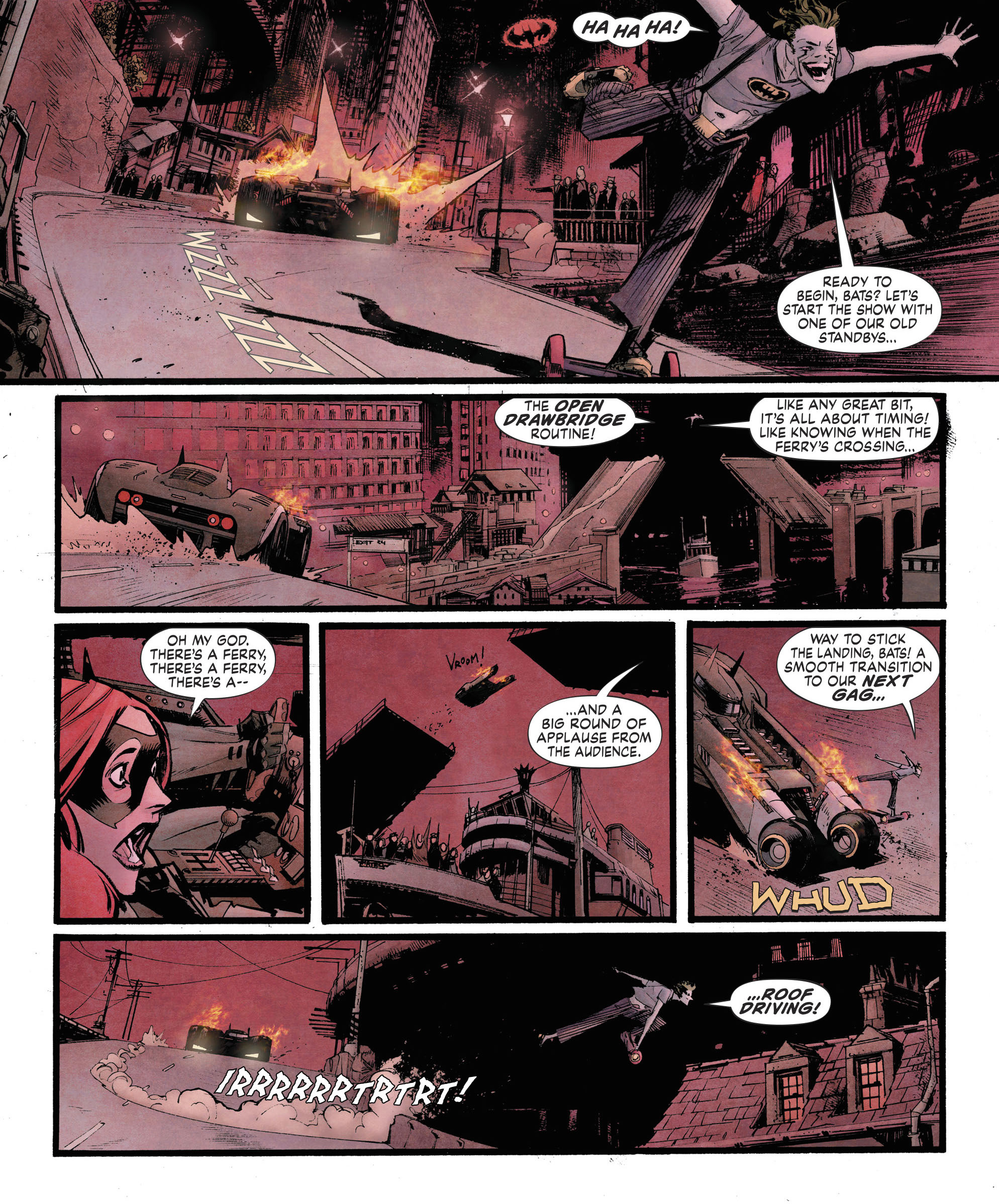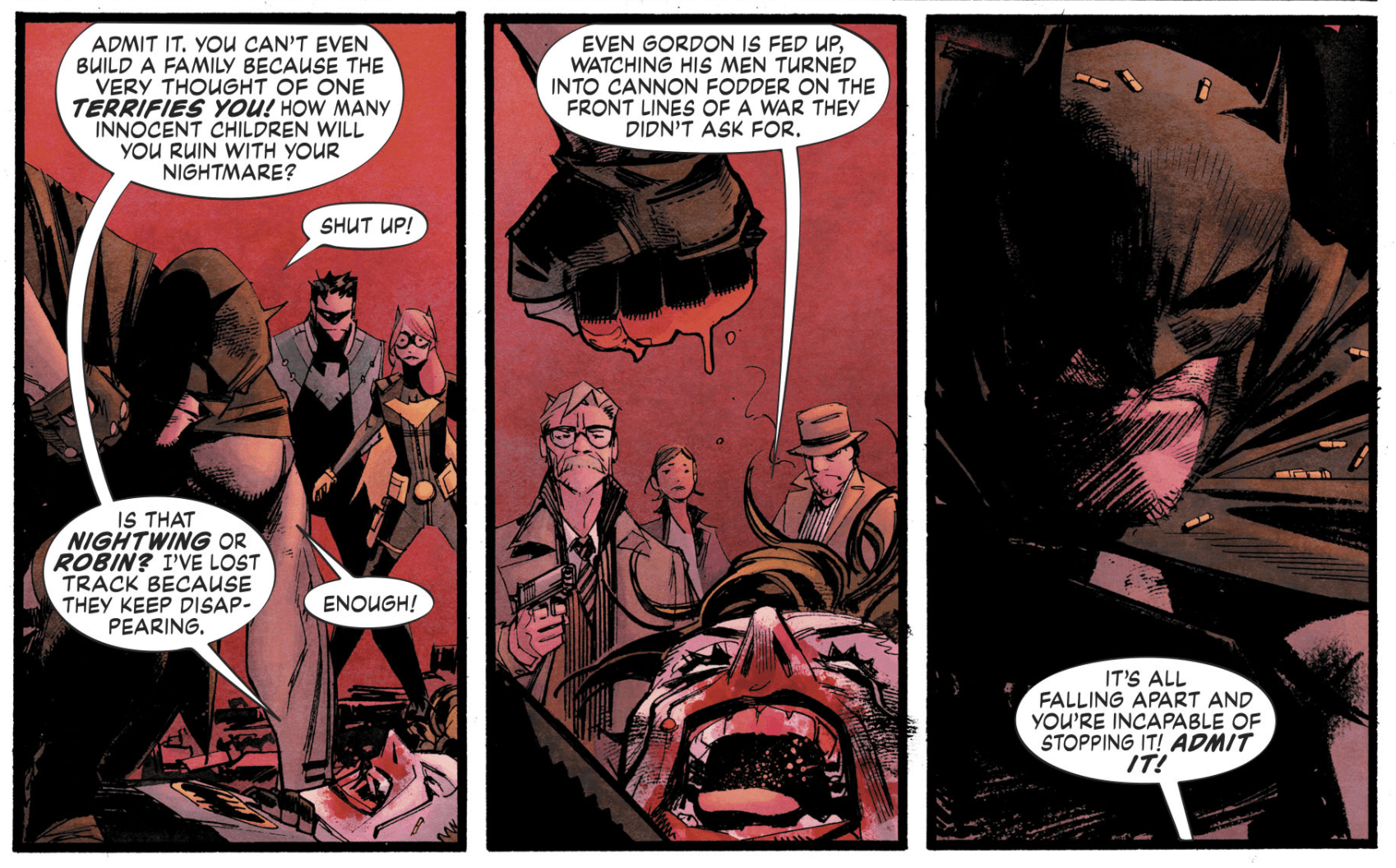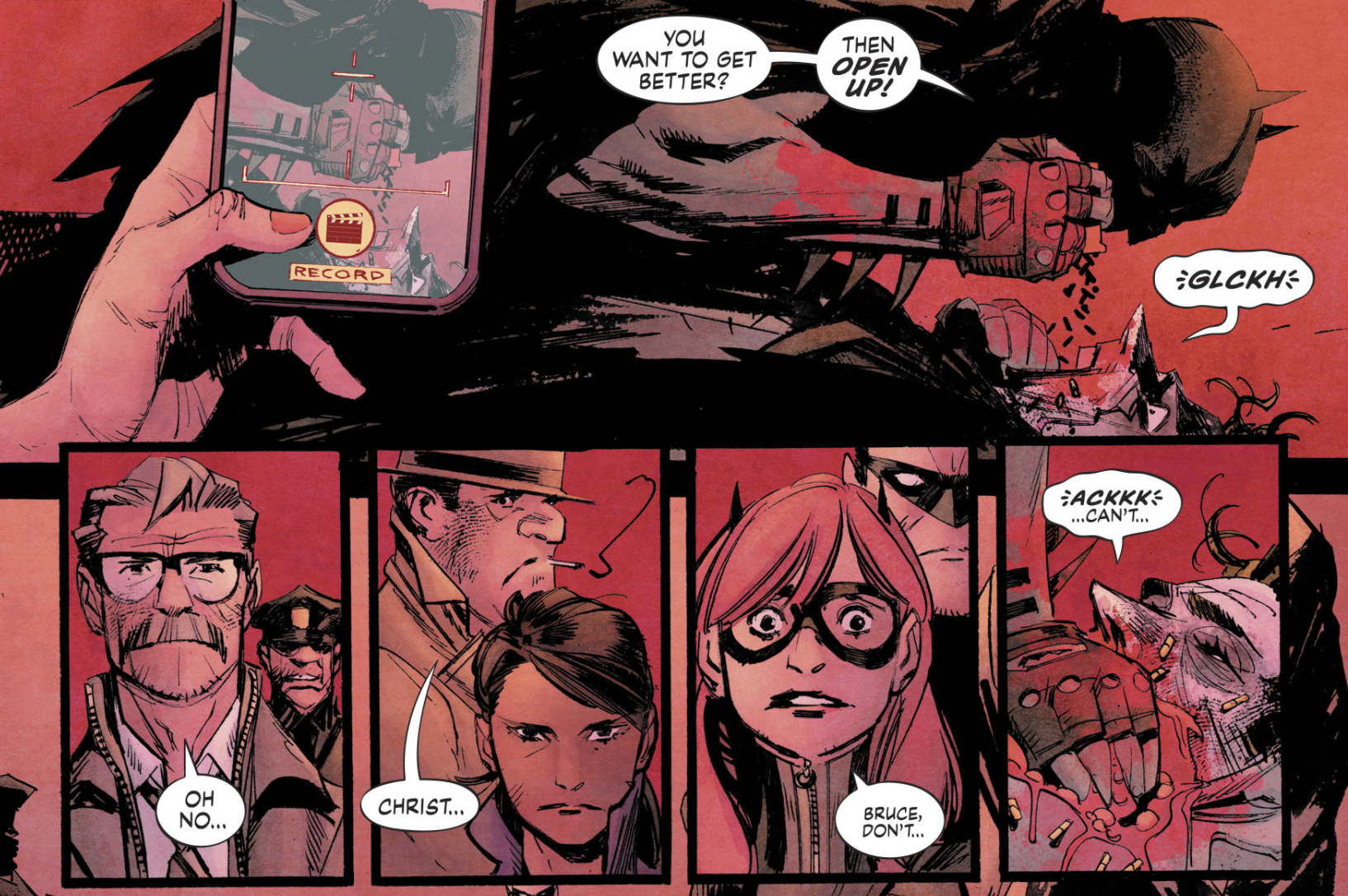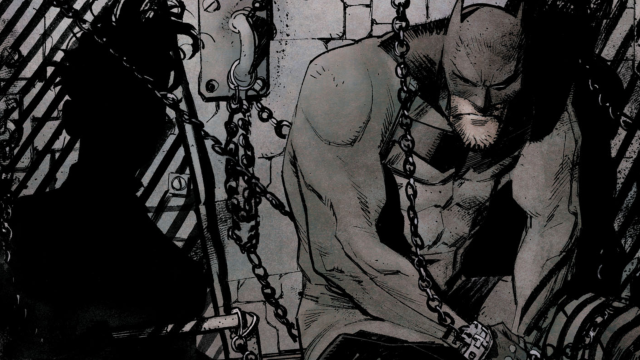Image: DC Comics
The idea that Batman is the true source of the evils that plague Gotham City isn’t exactly new, but it’s one that DC’s comics have largely left unexplored, leaving fans to debate it among themselves. In Sean Murphy’s Batman: White Knight, the publisher is finally getting in on the Great Batman Debate and pushing it forward.

The Batman-as-Catalyst argument posits that, in his quest to avenge his dead parents and rid the world of evil, Bruce Wayne inadvertently creates his own worst enemies. In choosing to dress up as a gigantic bat and lurk in Gotham’s shadows, he created a template for other obsessive, dangerous people to assume new identities and begin breaking the law in favour of their own personal codes of right and wrong.
With Batman, that personal code has been framed as dark, but ultimately righteous and justifiable. Characters like the Joker, on the other hand, are depicted as being brilliant — but also as broken, chaotic people who only want to see the world burn.
Though Batman: White Knight does eventually dig into the concept of Batman creating villains, it opens with a much more sobering and direct critique of Batman. As the Joker leads Batman, Nightwing, and Batgirl through yet another high-speed chase through Gotham, the Dark Knight’s younger companions are increasingly worried about the lengths their mentor is willing to go to in order to catch his archnemesis.
Batman repeatedly puts multiple citizens in direct danger while the Joker playfully teases his pursuers from the comfort of a hoverboard.

As always, Batman closes in on the Joker and the two fall into their familiar back-and-forth that always precedes the Joker being hauled off to Arkham yet again. But in this instance, the Joker imparts Bats with a bit of wisdom that shakes him.
The crime, the terror, the constant fights that leave innocent bystanders dead — the Joker does it all out of love for Batman and what he gives the city. Gotham, the Joker muses, is actually a rather humdrum place that he once tried to enliven with comedy. When comedy failed, he turned to villainy and managed to get a rise out of Gotham’s citizens, but it wasn’t until he and Batman became mortal enemies that the city truly came alive.
Rather than considering the validity of the Joker’s assertion, Bruce lays into him and the Joker patiently takes his beating while continuing to fuck with Bruce’s mind. He explains how their shared spectacle that once enlivened Gotham has rotted and turned into something darker — a warped addiction to constant madness and violence that both of them are struggling to break free from.
More than that — because Batman can’t understand how he’s part of the larger problem — he’s unable to see the ways in which that darkness has contributed to the dysfunction in Batman’s personal life.

As Commissioner Gordon arrives on the scene with Gotham’s police, the Joker presents his grand thesis that Batman is a villain, and a proposition: he’ll go on anti-psychotic medication in order to become the kind of person who can fix everything that Batman has left broken.
Bruce takes him up on his offer by sitting on the Joker’s chest and forcing handfuls of pills into his throat until the clown prince of crime can’t breathe and begins to choke almost to death. Though the circumstances are wildly different, it’s clear that the scene is meant to echo the moment that Eric Garner was killed in 2014, after multiple police officers pinned him to the ground under suspicion of selling loose cigarettes.

The Joker’s assault, like Garner’s death, is captured on camera and immediately triggers a heated debate about the legality of Batman’s vigilantism and whether the Gotham Police Department is complicit in his actions.
Gordon argues that Batman isn’t technically a part of Gotham’s police force, but a newly-sane Joker points out that Gordon’s use of the Batsignal stands as very compelling evidence to the contrary.
The Joker’s ultimate plan to fix Gotham, he tells Gordon from behind bars, isn’t just to take Batman down, but to formally sue him and the police department for effectively greenlighting the use of paramilitary force that’s put the lives of citizens on the line for too long.
Batman: White Knight is an inversion of Batman and the Joker’s traditional roles as hero and villain, but the story being set up is one that’s more concerned with current conversations about police brutality.
The Joker will have to make his case in court that Batman is Gotham’s living embodiment of unchecked, state-sponsored violence, but this first issue seems more than comfortable presenting that idea as fact and asking you to consider what all it means.

Comments